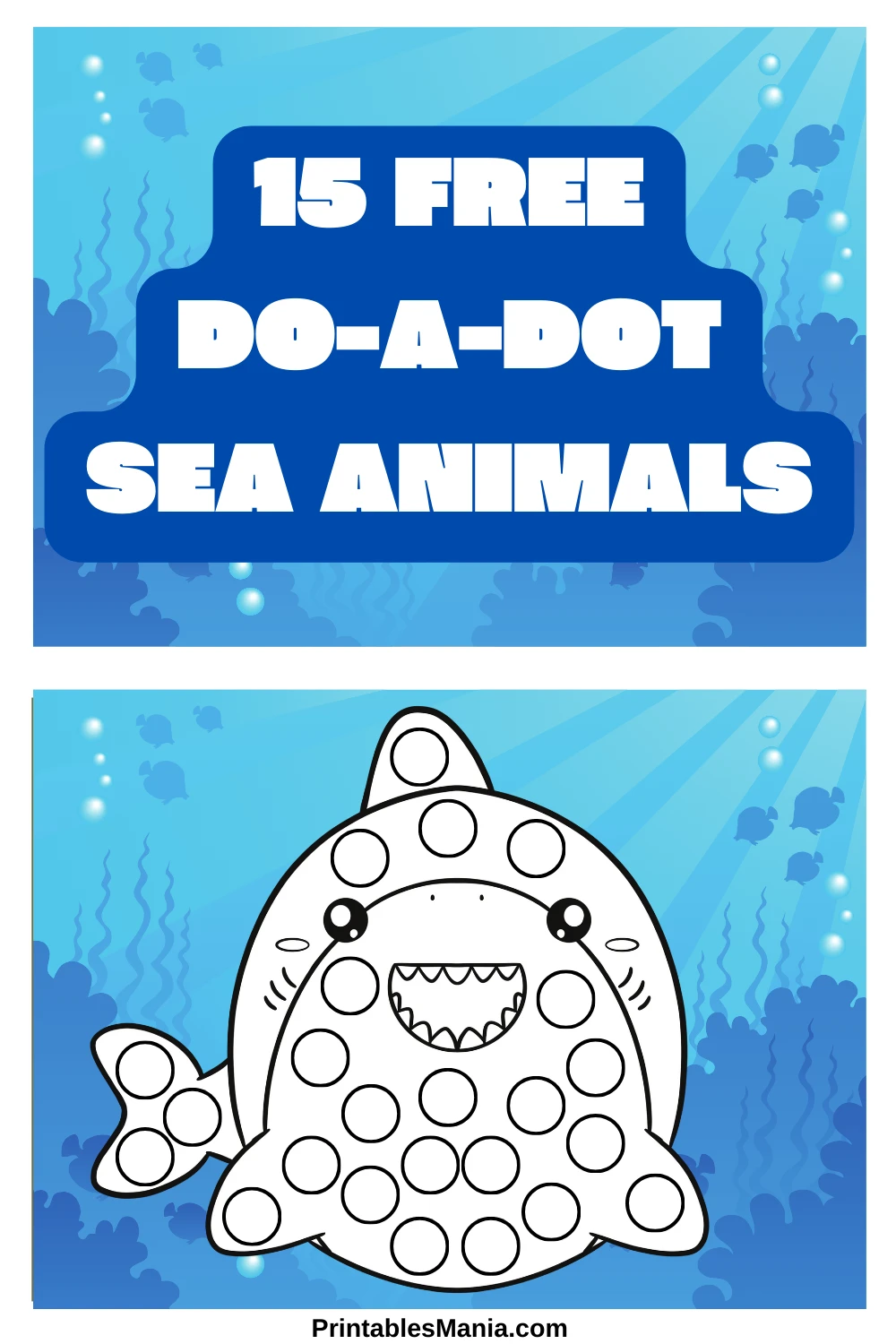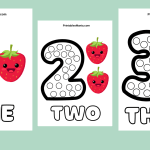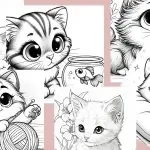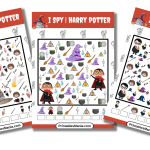Dive into a world of underwater fun and learning with our Do A Dot Sea Animal Printables! Perfect for preschoolers, kindergarteners, and young learners, these engaging printable activities feature a variety of charming sea creatures, including whales, sharks, dolphins, and more.
Our Do A Dot Sea Animal Printables are designed to help children develop essential fine motor skills, hand-eye coordination, and creativity while exploring the fascinating world beneath the waves. These hands-on activities are enjoyable and provide valuable educational opportunities for young minds.
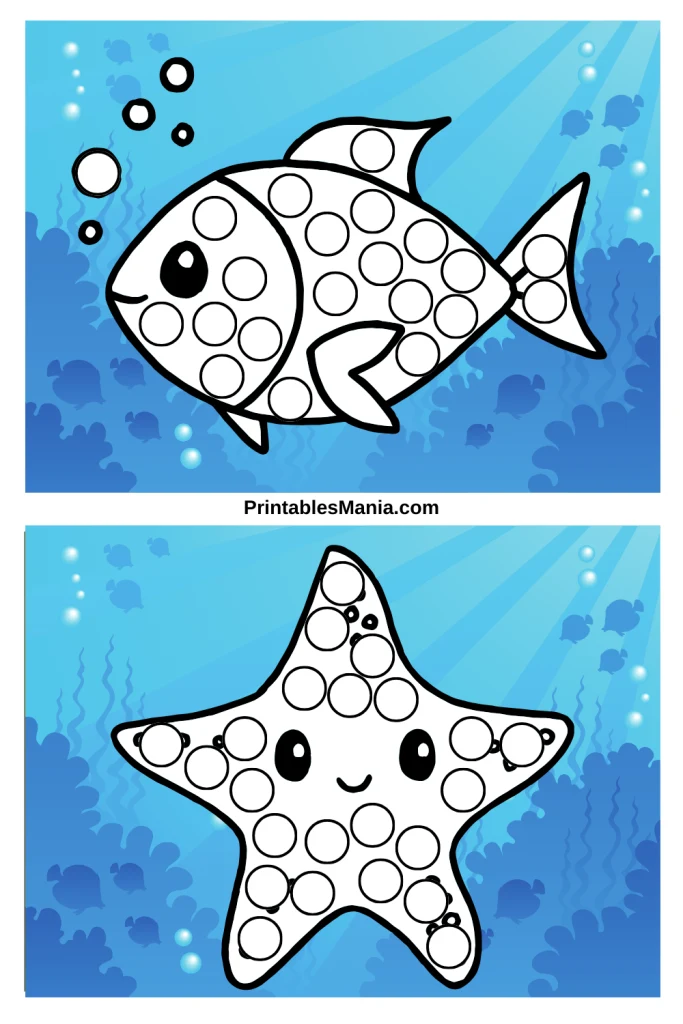
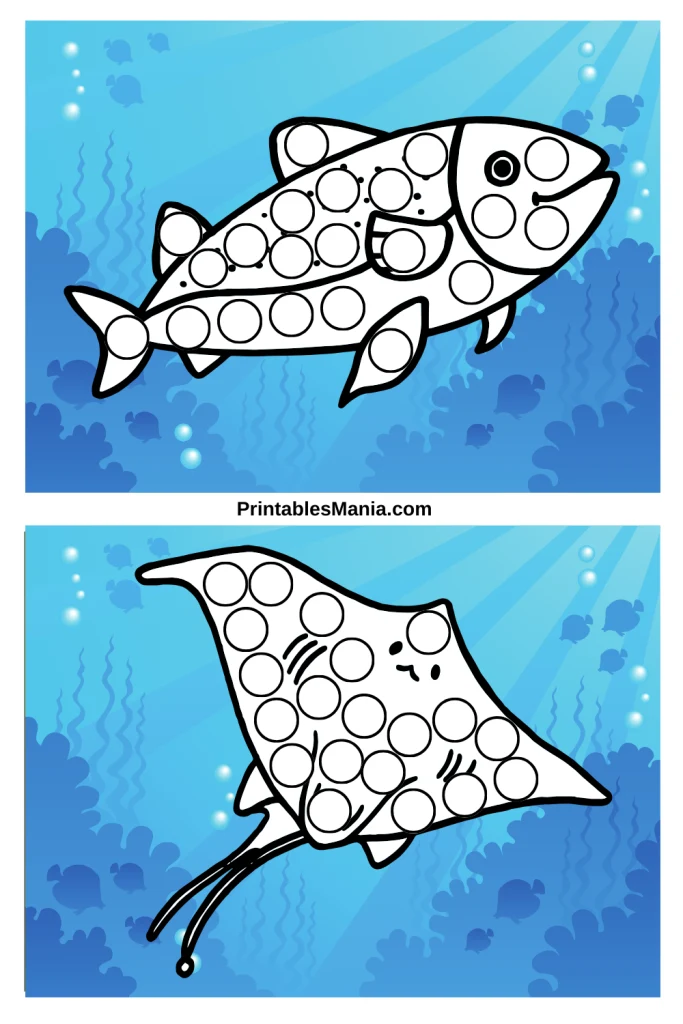
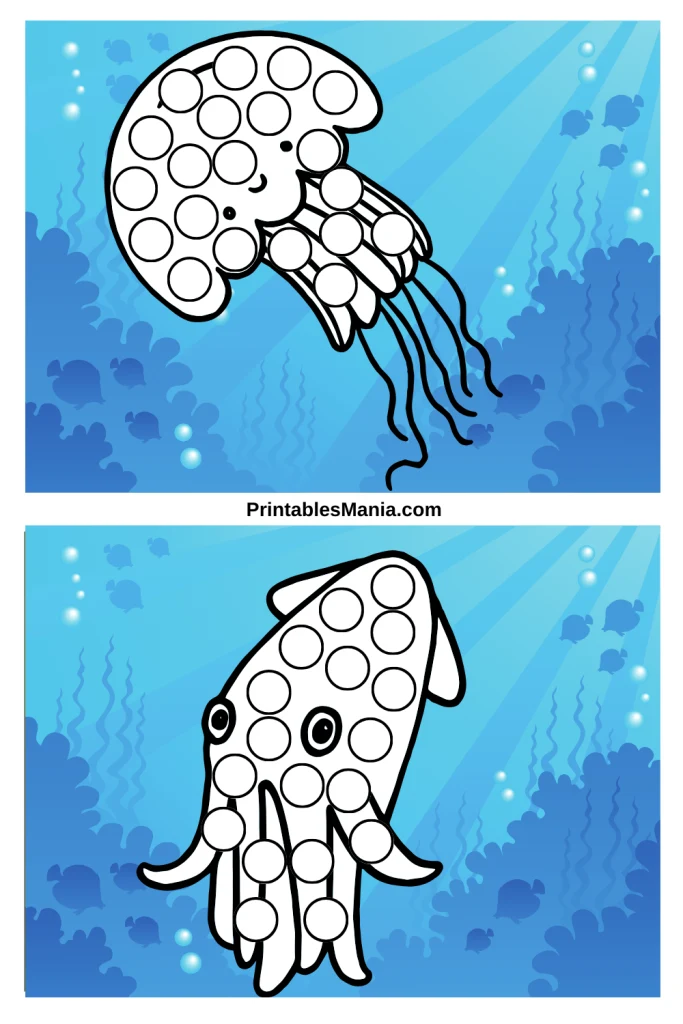
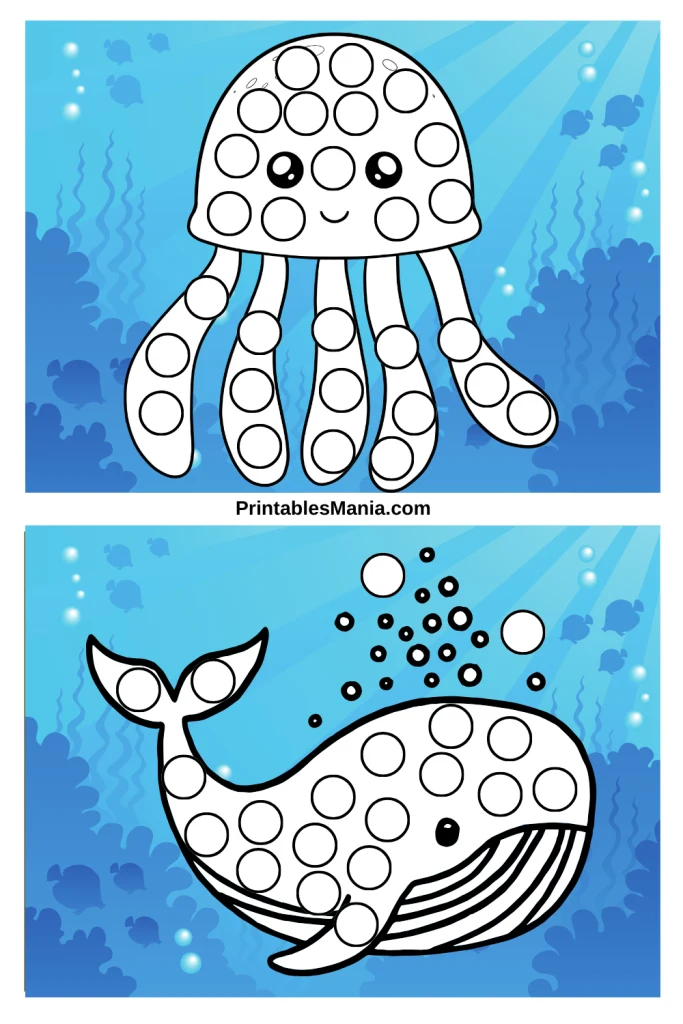
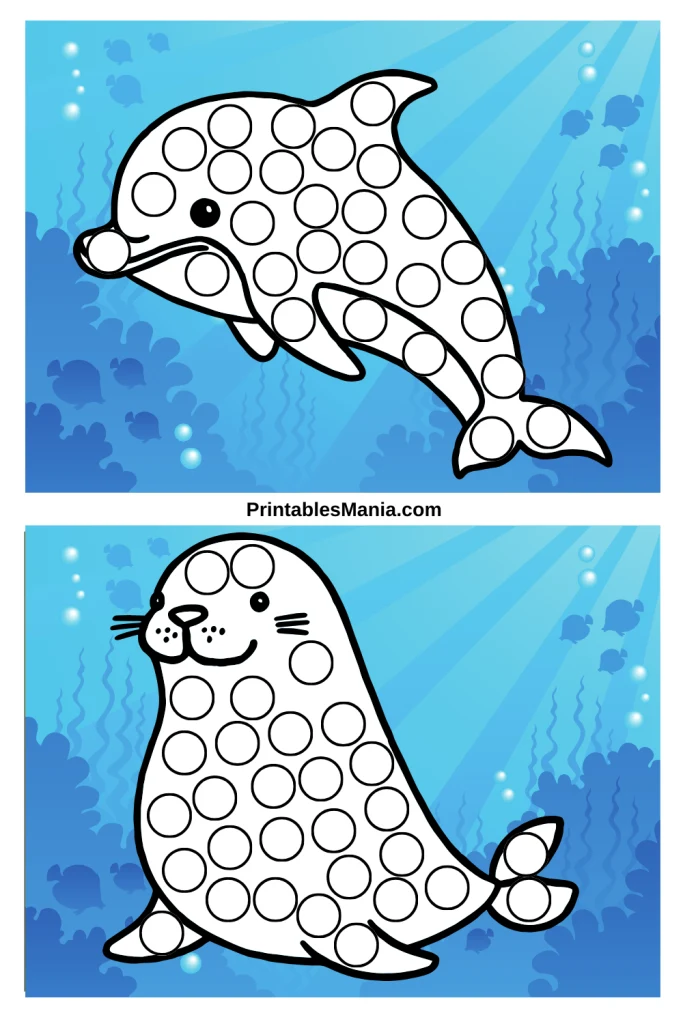


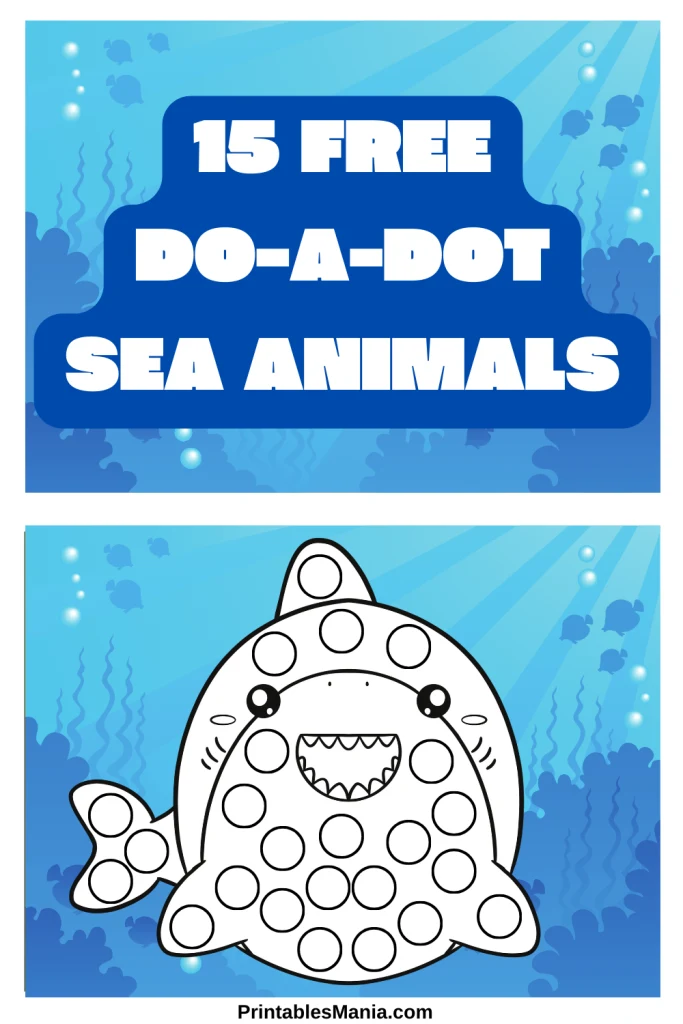
Each printable page showcases a different sea animal, waiting to be brought to life with the vibrant colors of bingo daubers or dot markers. As children fill in the dots, they’ll learn to recognize and appreciate the diverse creatures that inhabit our oceans.
Whether you’re a parent, teacher, or homeschooler, these printables are a fantastic resource for incorporating ocean-themed lessons into your curriculum. The activities are easy to set up and require minimal materials, making them perfect for classroom settings or at-home learning.
Creative Ways to Extend Learning
Using “Do A Dot Sea Animal Printables” offers a unique opportunity to expand children’s learning through engaging, creative activities. Here are some innovative ways to extend the educational value of these printables:
Create an Ocean Mural
After children use their Do A Dot markers on the sea animal printables, they can cut out the shapes and arrange them on a large piece of mural paper. Encourage them to draw seaweed, coral, and other oceanic elements to create a full underwater scene. This helps children understand the ecosystem and promotes their spatial thinking and artistic skills.
Match the Habitats
Introduce an activity where children match each sea animal with its correct habitat. Provide separate printables that depict different underwater environments, like coral reefs, deep sea, and coastal waters. This activity can teach children about the diversity of marine life and the importance of habitats in supporting different species.
Interactive Storytelling
Encourage children to use the sea animals they’ve colored to tell a story. They can imagine the adventures of a dolphin or the journey of a sea turtle. This activity helps develop narrative skills and enhances creativity. Optionally, these stories can be captured in a homemade book with illustrations made from the colored printables.
Sensory Bins
Create a sensory bin filled with water beads, sand, or blue gel beads to simulate water, and allow children to place their Do A Dot sea animals in the bin. This tactile experience can be very engaging for young children and can help them learn about different textures and sensory responses associated with the marine theme.
Conservation Projects
Link the activity to conservation efforts by discussing the environmental threats facing each animal. Encourage children to think about how they can help protect marine life, such as participating in local beach clean-ups or learning about sustainable seafood choices.
Fun Facts About Each Sea Animal
Adding fun facts about each sea animal featured in the printables can make the activity more informative and engaging. Here are some examples:
Octopus
- Camouflage Artists: Octopuses can change their color and texture to blend in with their surroundings to hide from predators and sneak up on prey.
- Brain Power: Octopuses are considered the most intelligent of all invertebrates. They have been observed using tools, solving puzzles, and escaping from enclosures.
Dolphins
- Communication: Dolphins communicate with each other using a variety of clicks, whistles, and body postures.
- Echolocation: They use echolocation to find food and navigate in the water, sending out sounds that bounce back to them from objects.
Sea Turtles
- Ancient Travelers: Sea turtles are known to travel thousands of miles through the oceans, with some species like the Leatherback traveling from the Arctic to the Antarctic.
- Longevity: Some sea turtles can live up to 50 years or more in the wild.
Sharks
- Diverse Diet: Sharks have a diverse diet that can include fish, crustaceans, mollusks, plankton, krill, marine mammals, and even other sharks.
- Sensory Perception: Sharks have a strong sense of smell and can detect a drop of blood in an Olympic-sized pool.
Jellyfish
- Prehistoric Creatures: Jellyfish have been around for more than 650 million years, which means they predate dinosaurs.
- Survivors: Jellyfish do not have brains, hearts, or bones, but they can clone themselves and adapt to a wide range of ocean environments.
By incorporating these creative learning extensions and fascinating animal facts, your “Do A Dot Sea Animal Printables” page can transform from a simple coloring activity into a comprehensive educational tool that fosters a deeper understanding and appreciation of marine life.

